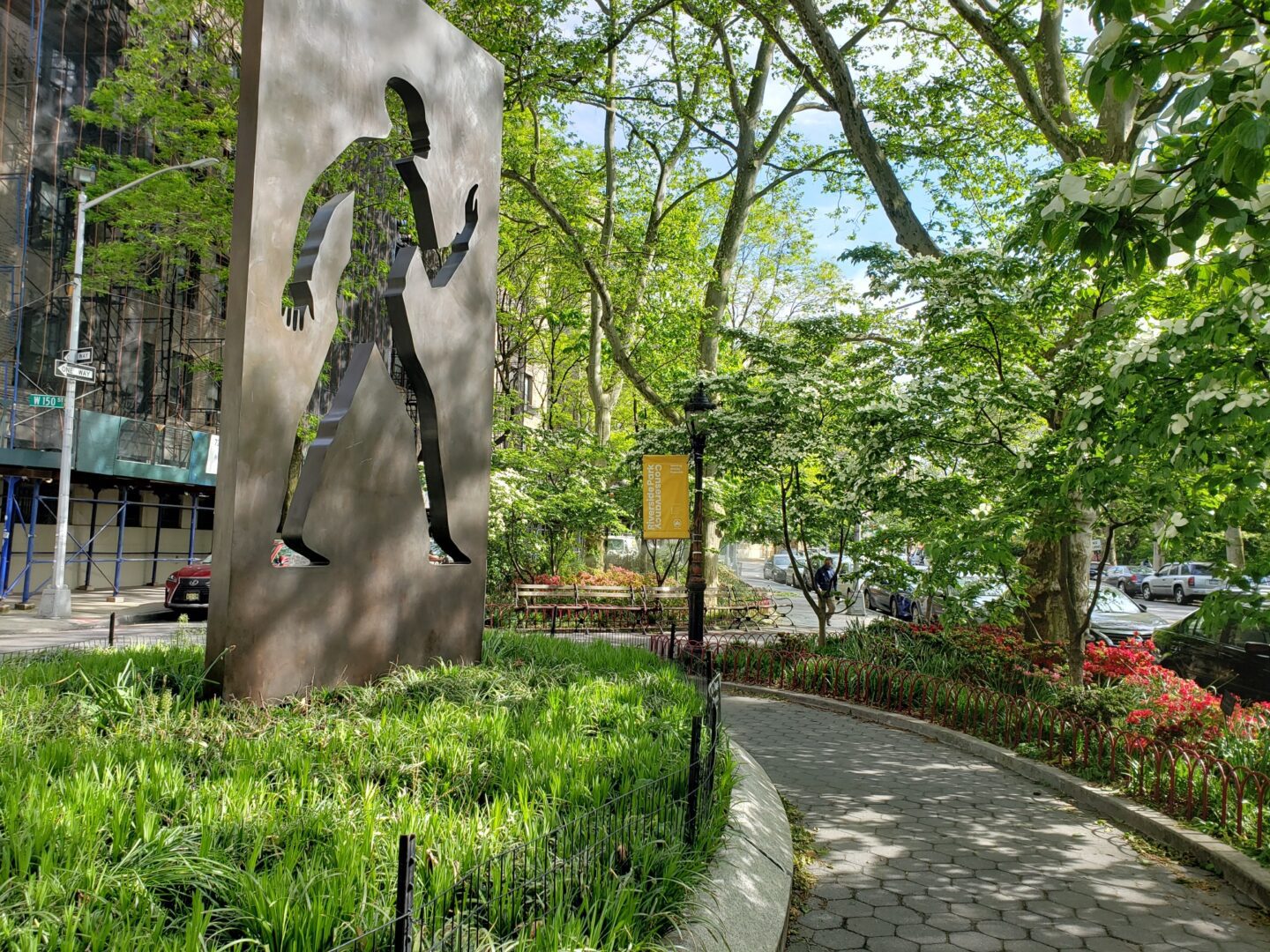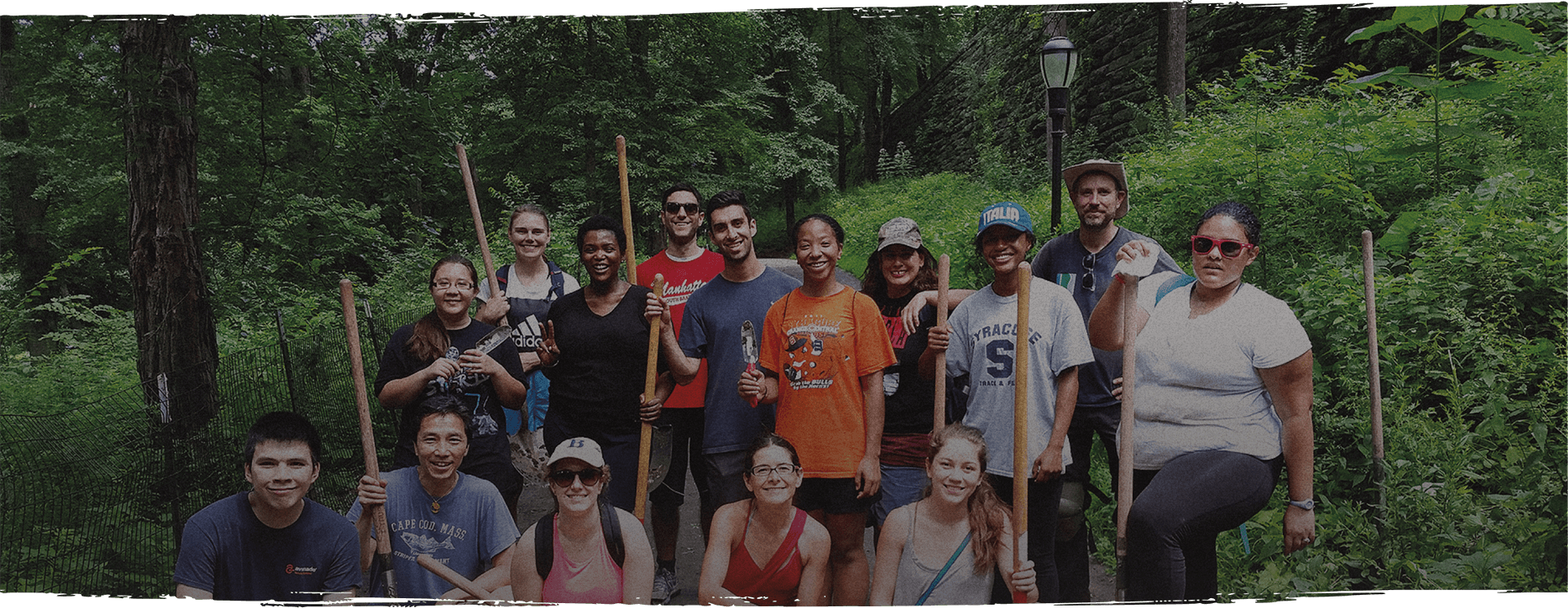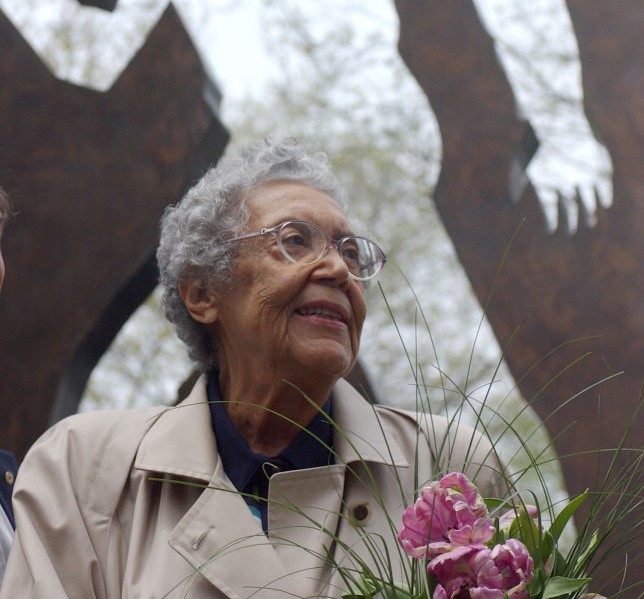
Ralph Ellison Memorial
Ralph Waldo Ellison was born on March 1, 1914 in Oklahoma City, Oklahoma. In 1933, he won a scholarship to Tuskegee Institute and opted to study music. Unable to finish his senior year due to financial problems, Ellison moved to New York in 1936. Not long after his arrival, he met Richard Wright, who convinced Ellison to write for a living. He went to work for the Federal Writer’s Project in 1939 doing research for a book called Negroes in New York. It was while he was recovering from an illness in Vermont that he typed out “I am an Invisible Man,” the first words of the novel for which he is best known. Ralph married Fanny McConnell in 1946 and settled in New York where he continued to work on his novel. In 1952, Invisible Man was published. One of the first novels to portray modern racial issues in America from a Black person’s perspective, the book garnered much critical acclaim and also stirred much academic debate and discussion.
Ellison began working on his second novel in 1954. On the verge of completing it, Ellison lost hundreds of pages in a house fire in 1967. He spent the rest of his life rewriting it. Ralph Ellison died in April of 1994 at the age of 80 from pancreatic cancer. At the time of his death, his second novel, now a nearly 1,500 page manuscript, was still unfinished. His widow, Fanny, appointed John F. Callahan, a professor at Lewis and Clark College in Portland, Oregon, her husband’s literary executor. From the manuscript, Callahan extracted a story about the shared history of a race-baiting senator, and an old Black minister. The book is called Juneteenth, in honor of June 19, 1865, the day Union soldiers brought news to enslaved people in Texas of the Emancipation Proclamation, which had become official two years earlier. Callahan also discovered several short stories written by Ellison between 1937 and 1954 and put them together in a book called Flying Home and Other Stories, published in 1996.
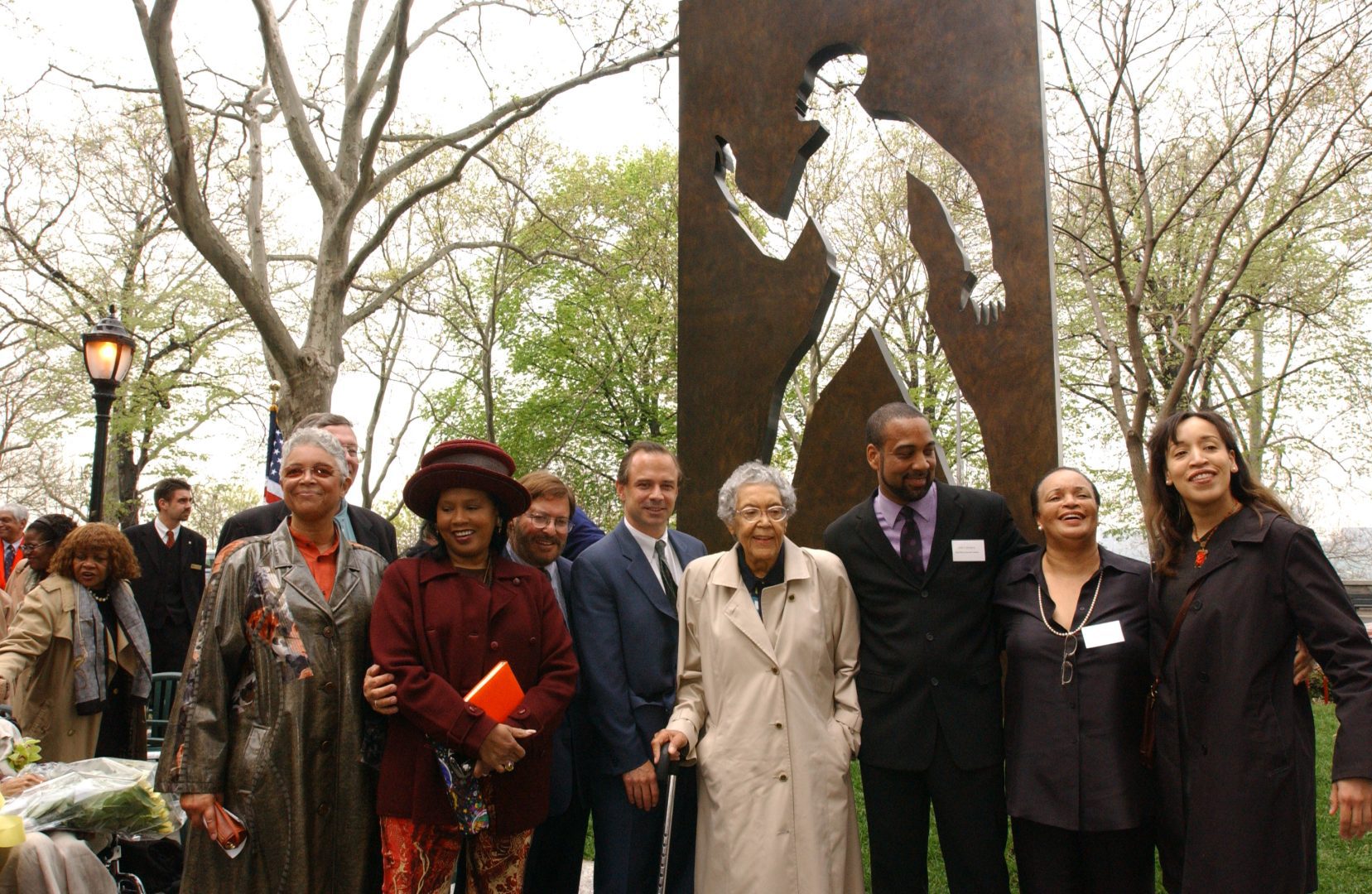
Ralph Ellison Memorial Committee
In 1998, the Ralph Ellison Memorial Committee was established by a group of local residents to plan a memorial celebrating Ralph Ellison’s legacy in the neighborhood he loved. The Riverside Drive ‘island’ at 150th Street was chosen as the site for the memorial. Ralph Ellison’s last and long-standing home at 730 Riverside Drive faces the site, and Ellison often strolled in this section of the Park.
In 1998, the committee worked with the Conservancy to sponsor a design competition for the project. The panel’s vote was unanimous in favor of the design submitted by the legendary, trailblazing artist Elizabeth Catlett.
The Ralph Ellison Memorial Project is her first commissioned public work in New York City. The Invisible Man sculpture is a 15 foot high, 7 ½ foot wide, six inch thick slab of bronze featuring a cutout silhouette of a man. His struggle, Catlett suggests, is universal, genderless, and timeless. The artwork is the centerpiece of a restored area of Riverside Park, surrounded by dogwoods, azaleas, and ornamental gardens from 149th to 153rd Street.
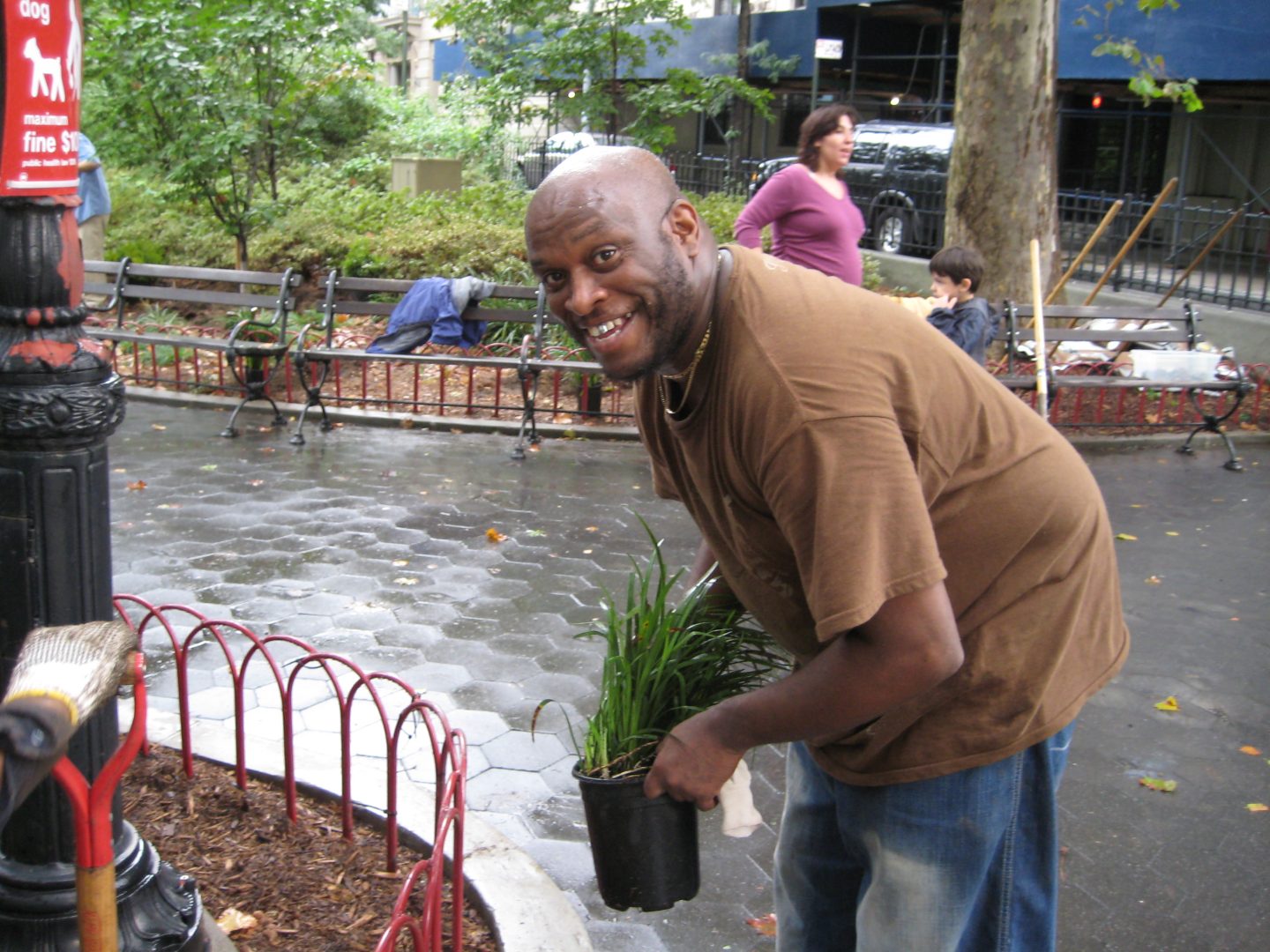
Catlett began work on the sculpture in the summer of 2001 and the sculpture was unveiled on May 1, 2003. Ralph Ellison’s widow, Fanny Ellison, who still lived at 730 Riverside Drive attended the ceremony, along with artist Elizabeth Catlett, Bill and Camille Cosby, actress Ruby Dee, Reverend Calvin Butts of the Abyssinian Baptist Church and many local politicians and residents of the Harlem community. Benches in memory of Ms. Catlett’s husband, Mexican artist Francisco Mora, and in tribute to former City Council member Stanley Michels, who allocated the majority of City funding for the memorial, were also unveiled that day.
Riverside Park Conservancy staff and Grassroots Volunteers work year-round to maintain the area surrounding the monument.
